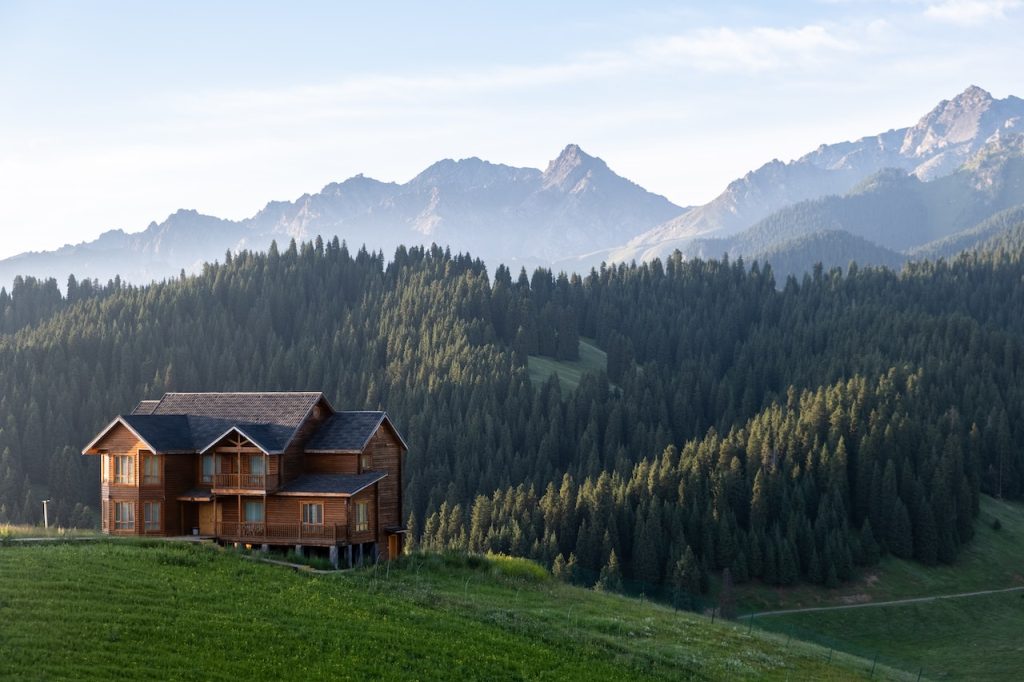# Building a Better Tomorrow: The Role of Sustainable Tourism in Conservation
Imagine standing on a pristine beach, the sun kissing your skin as the waves crash gently onto the shore. You look around, taking in not just the stunning scenery but the thoughtful design of eco-friendly resorts, litter-free landscapes, and the cheerful chatter of locals who are truly invested in their community. This was my reality on a recent trip to Costa Rica, a country that embodies the principles of sustainable tourism in a way that left me both inspired and hopeful. The ethos of this approach goes beyond mere travel; it’s about building a better tomorrow for both the planet and its inhabitants.
## Understanding Sustainable Tourism
Sustainable tourism is a responsible way to travel that aims to minimize our environmental footprint while maximizing social and economic benefits for local communities. It encompasses a wide range of practices, including supporting local economies, conserving resources, and preserving cultural heritage. Unlike traditional tourism that often exploits resources and leads to overcrowded destinations, sustainable tourism promotes harmony between travelers, local populations, and the environment.
### The Vital Role of Conservation
At the heart of sustainable tourism lies conservation. It’s crucial for preserving our planet’s natural wonders for future generations. When done right, tourism can act as a powerful tool in the conservation toolkit, generating funds and fostering awareness about environmental issues.
1. **Financial Support**: Entrance fees to national parks and eco-tours often fund conservation projects. This creates a self-sustaining cycle where both tourism and preservation flourish.
2. **Habitat Restoration**: Eco-tourism companies frequently participate in habitat restoration projects. Travelers might find themselves planting trees or cleaning up beaches as part of their adventure.
3. **Wildlife Protection**: Ethical wildlife tours educate visitors about endangered species and promote responsible behavior, reducing poaching and habitat destruction.
### An Example to Follow: Costa Rica
Costa Rica is a shining example of how sustainable tourism can be effectively integrated into conservation efforts. The country boasts an impressive 25% of its land as protected areas, including rainforests, wetlands, and marine habitats. Local communities have embraced eco-friendly practices, capitalizing on their rich biodiversity while preserving it.
Take Monteverde Cloud Forest Reserve, for instance. This lush haven attracts thousands of visitors every year. The income generated has led to impressive conservation initiatives, including reforestation projects and community education programs, proving that tourism can yield lasting positive impacts.
## The Eco-Friendly Traveler’s Mindset
To break the cycle of environmentally detrimental tourism, travelers must adopt an eco-friendly mindset. This is where the power of conscious choices comes into play:
– **Choose your Accommodation Wisely**: Opt for eco-friendly hotels or homestays committed to sustainable practices, such as solar energy, waste recycling, and water conservation.
– **Support Local Economies**: Dine at local restaurants, shop at crafts markets, and hire local guides to ensure your tourism dollars benefit the community directly.
– **Travel Off the Beaten Path**: Explore lesser-known destinations to distribute the tourist load and give smaller communities the economic boost they deserve.
– **Leave No Trace**: Follow the principles of leaving no trace when you explore natural areas. Make it a point to pack out what you pack in, ensuring nature remains untouched.
## Pro Tips for The Sustainable Traveler
1. **Research Before You Go**: Understand the destination’s environmental challenges and the initiatives in place to combat them. This knowledge will enhance your experience and help you make informed decisions.
2. **Participate in Local Conservation Projects**: Many destinations offer the chance to volunteer. Whether helping with wildlife surveys or participating in beach clean-ups, getting involved will enrich your journey and contribute positively.
3. **Learn the Local Language**: Even a few basic phrases can go a long way in connecting with locals and gaining a deeper understanding of their culture and environmental challenges.
4. **Travel Off-Peak**: Visiting during off-peak seasons helps reduce overcrowding and allows for a more intimate experience with the local environment and culture.
5. **Educate Others**: Share your experiences and knowledge with friends, family, or on social media. Every conversation can spark change and inspire others to participate in sustainable tourism.
## The Ripple Effect of Sustainable Tourism
The benefits of sustainable tourism are not limited to the destination itself; they radiate outward. By supporting conservation and responsible practices, tourists help foster a collective consciousness that values preservation. Educated travelers return home to share their experiences, contributing to a growing movement toward eco-conscious living.
### Building Strong Communities
Sustainable tourism encourages community involvement. When locals are engaged, they become stewards of their environment. This unity often results in richer experiences for tourists, who can delve into authentic cultural practices—be it participating in traditional cooking classes or learning indigenous crafts.
### Protecting Biodiversity
Tourism can serve as a financial backbone for protective measures. The profits from eco-tours and park visits can fund research initiatives and habitat preservation, creating a promising potential for endangered species and the ecosystems they inhabit.
### Inspiring Future Generations
By integrating conservation into tourism, we plant seeds of awareness in the next generation. Young minds exposed to the beauty of nature and taught the importance of its preservation are more likely to champion environmental causes in their own lives.
## Challenges and Solutions
Despite its many benefits, sustainable tourism faces challenges, such as greenwashing—where companies falsely claim to be eco-friendly—and a lack of regulation.
1. **Demand Transparency**: Tourists should seek transparency from operators and verify the authenticity of their sustainable claims. Certifications from credible organizations can serve as a guide.
2. **Advocate for Regulations**: Support measures that push for sustainability standards in tourism. Sign petitions, attend town hall meetings, and use social media platforms to promote awareness.
3. **Cultivate Patience and Understanding**: Change takes time. Support destinations as they navigate the transition to sustainable practices. Your positive attitude can make a world of difference.
## Conclusion: A Shared Responsibility
Building a better tomorrow requires collective effort. Each travel decision can contribute to conservation and uplift local communities. As travelers, we are not just passersby; we are participants in a shared experience. When we choose sustainability, we embrace the exciting challenge of becoming caretakers of our planet.
So, the next time you plan your travels, think of it as an opportunity—not just for adventure—but as a chance to contribute to something greater: the preservation of our beautiful Earth and the diverse cultures that thrive on it. Together, we have the power to create a ripple effect that fosters a sustainable future for all. Let’s embark on this journey hand in hand, and together, we can build a better tomorrow.



